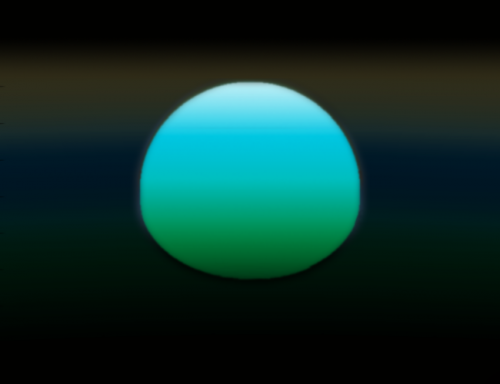January 11, 2012 report
Planetary professor shows what alien sunset really looks like

(PhysOrg.com) -- One of the great things about science is how so many people are able to use their imagination to conjure ideas, concepts or in some cases actual images of things in their mind, and then to use the tools at hand to bring such ideas to light so that others may see them as well.
One such recent application of this is Professor Frederic Pont, of the University of Exeter, who imagined what it might really look like if a person were able to visit another planet and to then sit quietly watching as the sun set, just as so many of us do here on planet Earth. But simply imagining how it might look wasn’t enough for Pont, he used data from a camera onboard Hubble, called appropriately enough, the Space Telescope, knowledge of how the color of light changes based on chemicals it encounters, and computer modeling, to create an actual image of what a sunset on an actual planet far out in space would look like. He’s posted it on his blog.
The planet in question, exoplanet HD209458b, nicknamed Osiris, just happens to be quite large and circles its star rather closely. At certain points, when the planet passes between us and its star, the light from that star passes through Osiris’s atmosphere before reaching us. That allows exoplanet specialists such as Pont, to figure out what is in that atmosphere. And once that is known, it becomes possible to deduce what colors would appear to our naked eyes, were we able to sit there on that planet watching that star set.
Though we couldn’t technically sit on the surface of Osiris, since it doesn’t have one, the picture that Pont produced approximates what it would look like, were it to exist, and the results are truly beautiful. This is because the light from Osiris’s star is white, like our own sun, but when it passes through the sodium in Osirisi’s atmosphere, red light in it is absorbed, leaving the starlight to appear blue. But then, as the sun sets, the blue light is scattered in the same way as it is here on Earth (Rayleigh scattering) causing a gradual change to green, and then to mushy dark green. And finally, due to diffraction, the bottom of the image becomes slightly flattened.
So now, instead of simply sitting around imagining what it might look like to kick back and watch the sun set on a planet 150 light years away, we can look at Pont’s picture, and see for ourselves.
© 2011 PhysOrg.com





















